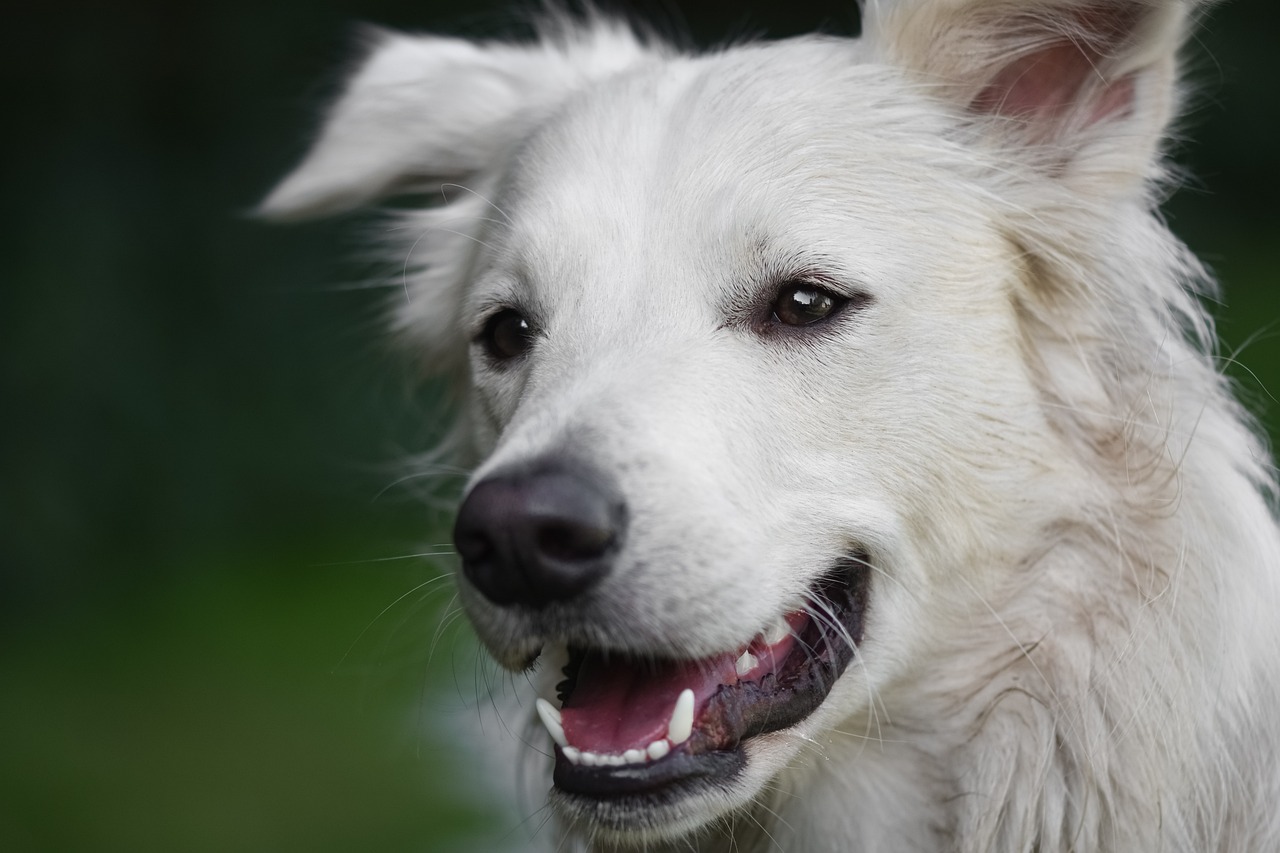The mudi dog is not just another breed; it’s a dynamic and vibrant companion that has captivated dog lovers worldwide. With its rich history and remarkable versatility, this energetic herder deserves a deep dive. From its unique physical traits to its lively temperament, understanding the mudi dog can greatly enhance your experience as a pet owner. Therefore, if you’re considering adding a mudi dog to your family or simply want to know more, keep reading to uncover everything you need to know about this incredible breed.
Origin and History of the Mudi Dog

The mudi dog traces its roots back to Hungary, where it emerged as an exceptional herding breed. This versatile dog played a critical role in managing livestock, specifically cattle and sheep, with unmatched agility and intelligence.
Notable Historical Points:
- Ancient Origins: The mudi dog descends from a mixture of various herding breeds, including the Puli, and is believed to be closely linked to Hungarian shepherds.
- Recognition: It gained official recognition in the 1930s, setting itself apart with its unique coat and versatile skills.
- War and Recovery: Post-World War II, the breed faced decline but experienced a resurgence in popularity due to dedicated enthusiasts.
Key Characteristics:
- Adaptable: The mudi dog thrives in varied environments, showcasing its incredible versatility.
- Intelligent: Its keen learning ability makes it not only a fantastic herder but also an ideal companion in numerous dog sports.
Understanding the historical significance of the mudi dog enriches your appreciation for this dynamic breed. Whether herding or competing, the mudi dog excels, embodying both spirit and endurance.
Physical Characteristics of the Mudi Dog

The mudi dog is a truly unique breed, showcasing a variety of striking physical traits that contribute to its charm. Here are key characteristics of this versatile herding dog:
- Size:
- Height: Ranges from 16 to 20 inches
- Weight: Averages between 25 to 35 pounds
- Coat:
- Dense and wavy, providing excellent protection against weather conditions
- Available in several colors: black, gray, brown, or even merle
- Ears:
- Distinctive semi-erect ears that add to their alert expression
- Eyes:
- Expressive and usually almond-shaped, often reflecting their intelligence and agility
- Tail:
- Medium length, typically carried in a “saber” style, showcasing their playful nature
To summarize, the mudi dog stands out not only for its impressive physical attributes but also for its roles as a herder. Selecting the right mudi dog combines function and aesthetics, ensuring a fit companion for active families and individuals alike.
Temperament and Personality Traits

The mudi dog boasts a distinctive temperament that sets it apart from other breeds. Energetic, intelligent, and highly trainable, these dogs thrive in active environments. Here are some key personality traits of the mudi dog:
- Loyal Companions: Mudi dogs develop strong bonds with their families. They are incredibly loyal and protective, making them excellent watchdogs.
- Playful and Affectionate: They enjoy playtime just as much as they cherish cuddles. Their affectionate nature makes them great family pets.
- Highly Intelligent: Quick learners, mudi dogs excel in obedience training and problem-solving tasks. This intelligence requires mental stimulation to keep them happy.
- Alert and Curious: Always on the lookout, mudi dogs are attentive and curious about their surroundings, making them excellent working dogs.
Ensure you provide sufficient social interaction to promote a well-adjusted mudi dog. Without proper engagement, their intelligence might lead to boredom, resulting in destructive behavior. Overall, the mudi dog’s vibrant personality makes it a delightful companion for active individuals and families.
Energy Levels and Exercise Needs
The mudi dog is a powerhouse of energy, requiring plenty of physical activity to thrive. Unlike many breeds, this herding dog is not just playful; it’s a high-energy athlete. Here’s how to ensure your mudi stays fit and happy:
- Daily Exercise: Aim for at least 1-2 hours of vigorous exercise each day. Activities can include:
- Long walks
- Engaging in play sessions
- Agility training
- Mental Stimulation: A mudi dog needs mental challenges as much as physical ones. Incorporate:
- Puzzle toys
- Obedience training sessions
- Herding trials that encourage problem-solving skills
- Versatile Activities: This breed thrives in various settings, so mix things up:
- Take them hiking
- Include swimming in warm weather
- Try canine sports like flyball or frisbee
In conclusion, the mudi dog demands an active lifestyle that stimulates both body and mind. Neglecting these needs often leads to behavioral issues. With proper exercise and engagement, your mudi will not only be happy but also a well-rounded companion.
Training and Socialization Techniques
Training a mudi dog is crucial for a happy and well-adjusted companion. Here’s why effective training and socialization are important:
- Intelligence: The mudi dog is highly intelligent, eager to learn, and retains commands quickly. This means they thrive under engaging and consistent training methods.
- Positive Reinforcement: Use positive reinforcement techniques, such as treats or praise, to encourage desired behaviors. This approach fosters a strong bond and motivates your mudi dog to perform tasks.
- Socialization: Early socialization is vital for a mudi dog. Expose them to various environments, people, and other animals. This helps them develop confidence and reduce anxiety in new situations.
- Basic Commands: Start with basic commands like sit, stay, and come. Due to their natural herding instincts, teaching recall is especially important to ensure their safety.
- Physical Activity: Incorporate plenty of exercise into training. Engaging a mudi dog with tasks such as agility training or herding exercises not only fulfills their physical needs but also sharpens their mental skills.
In summary, effective training and socialization significantly enhance the enjoyment of living with a mudi dog and promote their well-being.
Health Considerations and Lifespan
The mudi dog is generally known for its robust health and longevity. However, like any breed, it’s essential to be aware of potential health issues. Here are the key considerations:
- Common Health Issues:
- Hip Dysplasia: A hereditary condition affecting the hip joints.
- Eye Conditions: Cataracts and progressive retinal atrophy (PRA) can occur.
- Allergies: Skin irritations may arise from environmental factors or food.
- Lifespan:
- Mudi dogs typically live between 12 to 14 years, making them relatively long-lived among breeds.
To ensure your mudi dog stays healthy:
- Schedule regular vet check-ups.
- Keep vaccinations up-to-date.
- Maintain a balanced diet rich in nutrients.
Prevention is crucial. Regular exercise not only helps maintain a healthy weight but also reduces the risk of obesity-related issues, which are particularly significant for this active breed.
By focusing on preventative care, you can enjoy many happy years with your spirited mudi dog.
Grooming Requirements for Mudi Dogs
Mudi dogs are stunning creatures, but maintaining their unique coat requires a routine. Grooming not only keeps them looking their best but also helps in ensuring their overall health. Here are the essential grooming tips for a Mudi dog:
- Brushing: Brush your Mudi dog at least once a week to remove loose hairs and prevent matting. The dense coat can trap dirt; regular brushing keeps it clean and reduces shedding.
- Bathing: Bathe your Mudi dog every 3 to 4 months, or as needed. Use a gentle dog shampoo to avoid stripping natural oils.
- Ear Care: Check their ears weekly for dirt and wax build-up. Clean them with a veterinary-approved ear cleaner to prevent infections.
- Nail Trimming: Trim their nails regularly to prevent discomfort and potential injuries. Aim for every 3 to 4 weeks.
- Dental Hygiene: Brush your Mudi dog’s teeth several times a week to prevent dental issues. Dental chews can also help maintain oral health.
With these grooming practices, your Mudi dog will not only look great but also enjoy a healthier life. Remember, consistent care strengthens the bond between you and your loyal companion!
Mudi Dogs in Competitive Sports
Mudi dogs are not just herders; they excel in various competitive sports that showcase their agility and intelligence. Their innate athleticism makes them a preferred choice among sports enthusiasts. Here’s a closer look at some of the activities where the mudi dog truly shines:
- Agility Trials: Their speed and quick reflexes allow them to navigate complex courses with ease.
- Herding Competitions: Naturally skilled in herding, mudi dogs demonstrate impressive ability in sheepdog trials.
- Obedience Trials: With their high trainability, mudi dogs often rank highly in obedience challenges, proving their keen understanding of commands.
- Rally Obedience: This sport tests both their agility and obedience, providing a great outlet for their energy.
| Sport Type | Skills Required | Mudi Dog Strengths |
|---|---|---|
| Agility Trials | Speed, Precision | Exceptional agility and speed |
| Herding Competitions | Herding Instinct | Natural herding ability |
| Obedience Trials | Focus, Consistency | High trainability |
| Rally Obedience | Obedience, Control | Quick response to commands |
In summary, the mudi dog not only serves as a loyal companion but also thrives in dynamic, competitive environments. Their versatility in sports highlights their energetic nature and deep bond with humans, making them perfect for active families or individuals looking for a stimulating activity. Engage in any of these sports, and you’ll see just how remarkable the mudi dog can be!
Living with a Mudi Dog: Home Life and Compatibility
Bringing a mudi dog into your home is both exciting and rewarding. These intelligent and energetic dogs thrive in an active environment. Here’s how to ensure a harmonious life with your mudi dog:
- Space Requirements: Mudi dogs do best in homes with ample space to run and play. A large backyard is ideal, but regular trips to a nearby park can suffice.
- Family Dynamics: They are incredibly friendly and bond well with children and adults alike. Consider these factors:
- Social Interaction: Encourage playtime and interaction to avoid boredom.
- Pet Compatibility: Mudi dogs often get along with other pets, but early introductions are key.
- Training Needs: Consistent training and socialization are essential for a well-mannered mudi dog. Use positive reinforcement techniques as they respond well to this method.
- Mental Stimulation: Engage your mudi dog with puzzle toys and obedience games. Their high intelligence means they need mental challenges to stay happy.
In conclusion, a mudi dog can seamlessly fit into your home life, provided you meet their exercise, training, and social interaction needs.
Living with a Mudi Dog: Home Life and Compatibility
Living with a mudi dog can be an incredibly rewarding experience. However, integrating this active breed into your home requires a thoughtful approach to ensure compatibility for both you and your furry friend. Here are key aspects to consider:
- Space: A mudi dog thrives in spacious homes with yards. They enjoy having room to roam and explore.
- Family Dynamics: This breed is highly social. They bond well with children and other pets. However, early socialization remains crucial for good behavior.
- Activity Level: Be prepared for a highly energetic companion. A mudi dog needs regular exercise—long walks, daily play sessions, or even agility courses keep them happy.
- Training Needs: Consistent training fosters good behavior. A mudi dog responds well to positive reinforcement, making it easier to teach commands and tricks.
- Time Commitment: They sulk without engagement. Ensure you devote daily time to train and play, or you may face issues like destructiveness.
Ultimately, a mudi dog can fill your home with joy, laughter, and vibrant energy if your lifestyle aligns with their needs.
Frequently Asked Questions
What are the key characteristics of the Mudi dog?
The Mudi dog is known for its unique combination of energy, intelligence, and versatility. They typically have a medium-sized, muscular build, with a distinctive curly coat that can come in multiple colors. Their expressive ears can be either erect or semi-erect, showing their alert nature. Mudis are incredibly agile and can be exceptional herders, but they also excel in various dog sports. Their high intelligence means they require regular mental stimulation and physical exercise to avoid boredom.
Are Mudi dogs good family pets?
Absolutely! Mudi dogs can make excellent family pets, especially in active households. They are known for their loyalty and affectionate nature, having a strong bond with their family members. However, they require ample exercise and playtime to thrive and should be socialized from an early age to ensure they get along well with children and other pets. Mudis have a playful demeanor, making them a delightful addition to a lively environment.
How much exercise do Mudi dogs need?
Mudi dogs are an energetic breed that needs a considerable amount of exercise—ideally at least one to two hours daily. Engage them in various activities such as running, hiking, or participating in dog sports like agility training to keep them happy and healthy. It’s crucial to provide them with both physical and mental challenges, as lacking these can lead to undesirable behaviors caused by pent-up energy. A well-exercised Mudi is a content and well-behaved companion.
What are some common health issues in Mudi dogs?
Mudi dogs are generally robust, but like all breeds, they may be prone to certain health issues. Some common concerns include hip dysplasia, progressive retinal atrophy (PRA), and certain skin conditions due to their dense coats. Regular vet check-ups, a balanced diet, and maintaining a healthy weight can help mitigate these risks. Additionally, responsible breeding practices play a key role in reducing the prevalence of inherited health problems in Mudis.



